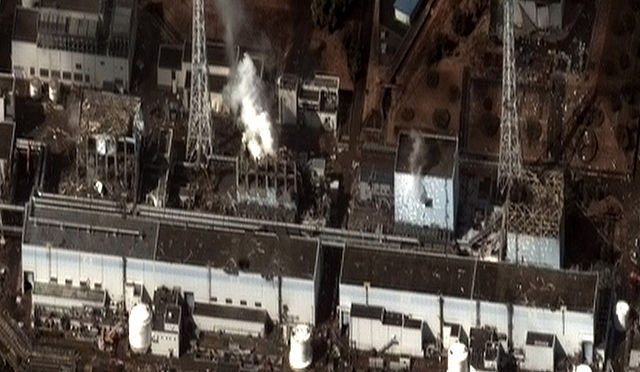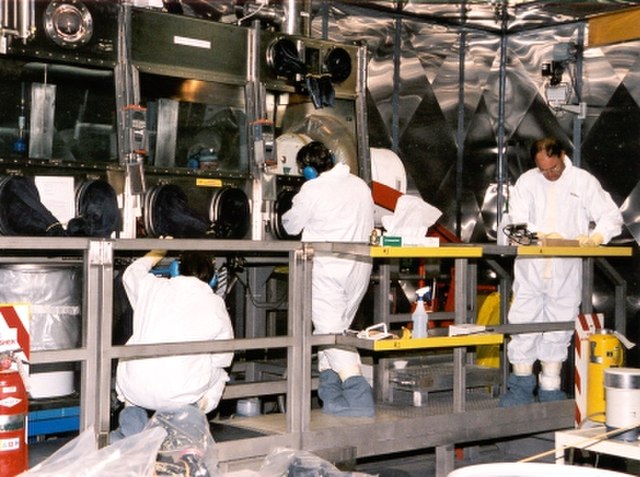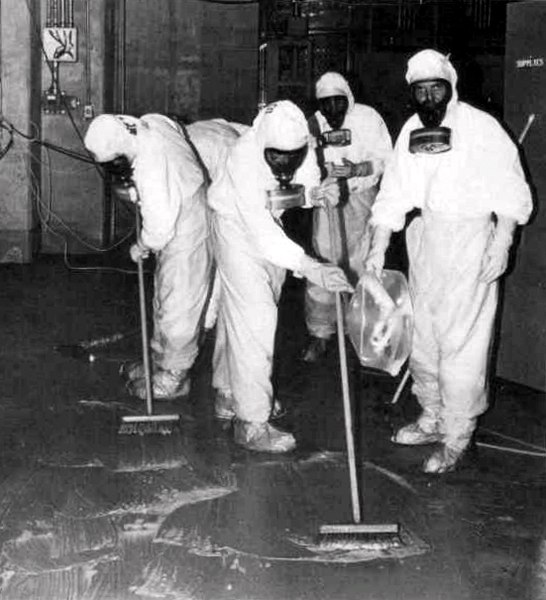Fukushima disaster cleanup
The Fukushima disaster cleanup is an ongoing attempt to limit radioactive contamination from the three nuclear reactors involved in the Fukushima Daiichi nuclear disaster that followed the earthquake and tsunami on 11 March 2011. The affected reactors were adjacent to one another and accident management was made much more difficult because of the number of simultaneous hazards concentrated in a small area. Failure of emergency power following the tsunami resulted in loss of coolant from each reactor, hydrogen explosions damaging the reactor buildings, and water draining from open-air spent fuel pools. Plant workers were put in the position of trying to cope simultaneously with core meltdowns at three reactors and exposed fuel pools at three units.
Assembly of hose fittings for Fukushima complex, Yokota AB
Radioactive contamination
Radioactive contamination, also called radiological pollution, is the deposition of, or presence of radioactive substances on surfaces or within solids, liquids, or gases, where their presence is unintended or undesirable.
As of 2013, the Fukushima nuclear disaster site remains highly radioactive, with some 160,000 evacuees still living in temporary housing, and some land will be unfarmable for centuries. The difficult cleanup job will take 40 or more years, and cost tens of billions of dollars.
Large industrial glovebox in the nuclear industry
Geiger-Muller counters being used as gamma survey monitors, seeking radioactive satellite debris
A clean-up crew working to remove radioactive contamination after the Three Mile Island accident.





